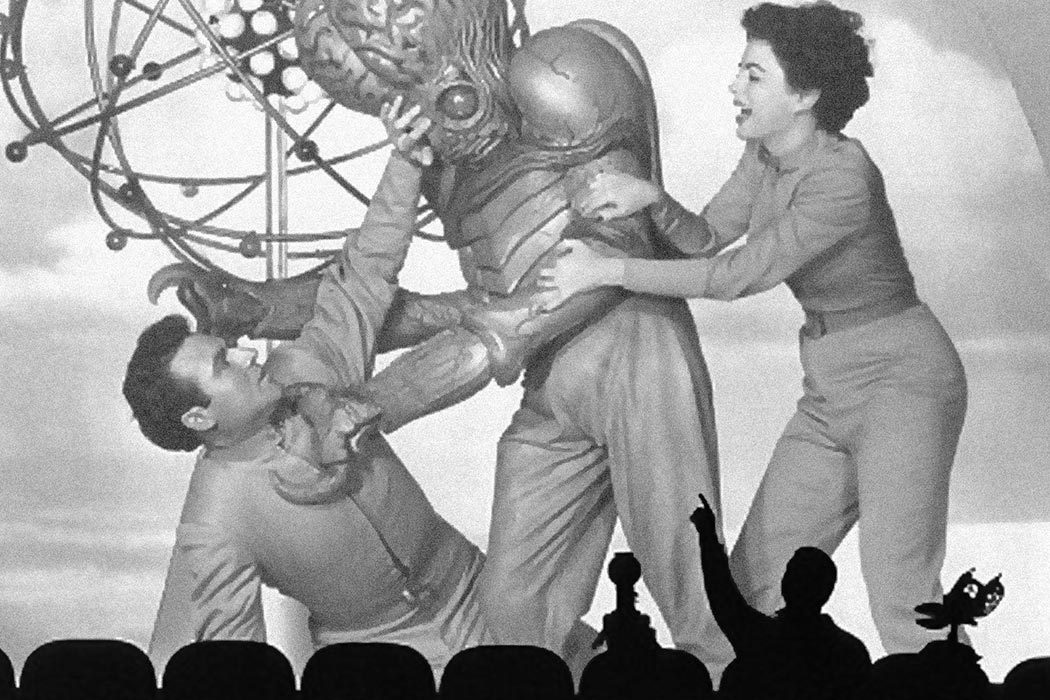The cult classic TV show Mystery Science Theater 3000 (MST3K), which went off the air after 11 seasons in 1999, could be back. Creator Joel Hodgson has launched an ambitious Kickstarter campaign to produce another season of the show, and met his $2 million fundraising goal in just a few days.
At first, MST3K may appear to be the dumbest show ever made. In it, a janitor—alternately played by show creator Joel Hodgson (1988-93) or head writer Mike Nelson (1993-99)—has been launched into space on a ship dubbed the “Satellite of Love” by a mad scientist in “the not too distant future.” Said janitor is forced to watch B-movies with friendly robots as a part of a plan to take over the world.
All of this is revealed in the opening credits. The actual meat of the show is a B-movie that you watch with Joel and two of his robots—Tom Servo and Crow—who appear as silhouettes in a movie theater in front of the screen. They watch the entire movie and ridicule it.
And that’s about it.
But, if you’re introduced by a loyal fan, you’re undoubtedly told that it’s smarter than you think, that there are layers to peel away, that there’s a certain language you have to speak to understand it thoroughly.
That might seem like a little too much praise for a show that has featured extended fart jokes, but in a 2007 essay in Journal of Film and Video, John King outlines exactly how the show functions on a higher level and why its beautiful idiocy is actually very smart.
King spends time discussing communications theorist Neil Postman’s Amusing Ourselves to Death (1985), in which he argues that television demands viewers to shut their brain off and not think critically about what they’re participating in.
According to King, Mystery Science Theater 3000 breaks all of Postman’s “three commandments of effortless entertainment”:
- Thou Shalt have no prerequisites
- Thou shalt induce no perplexity
- Thou shalt avoid exposition like the 10 plagues visited upon Egypt.
Moreover, the show represents, according to King, “television [that] could somehow instruct its viewers on how to watch television critically,” and teaches viewers to “reject the passivity fostered by its incessant flow of easy, context-free images.” Postman posits that a television show that promotes “media consciousness” could be a worthwhile exception to his ample scorn.
Enter MST3K, which brings about a heightened “media consciousness” that had been absent in television up until that time. As King notes, the show’s ability to step back from the passivity of the standard TV-viewing experience was, in part, the effect of cable television, which had non-peak hour programming segments that could take risks.
King goes further, arguing that MST3K not only made us conscious of the absurdity of television—something recognized but maybe unvoiced—but satirized it and created an “allegory of existence in a corporate controlled media state.”
The show breaks with Postman’s commandments and treads new ground, creating referential jokes that referenced previous episodes of the show. Since the show is an explicit performance of viewership—the audience watching at home, the characters in silhouette watching the B-film, the audience watching the B-film—the jokes also rebounded between the layers, forcing the viewer who wanted to understand them to watch the program sequentially.
It doesn’t sound like must-see TV from a critical standpoint. Yet, its absurdity was its genius.







